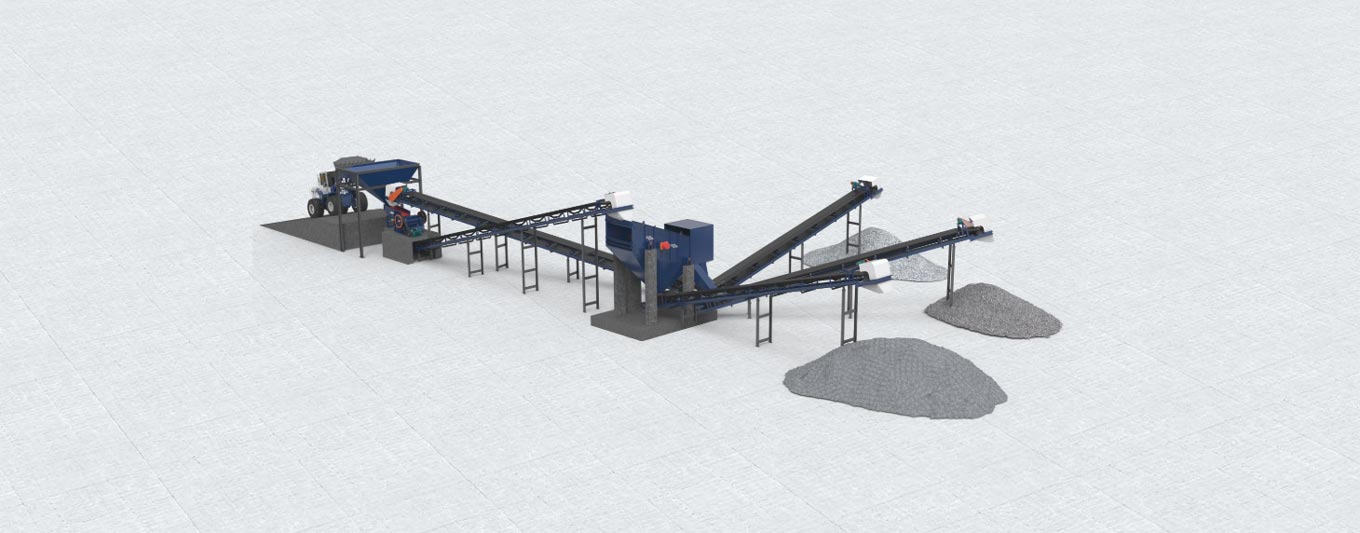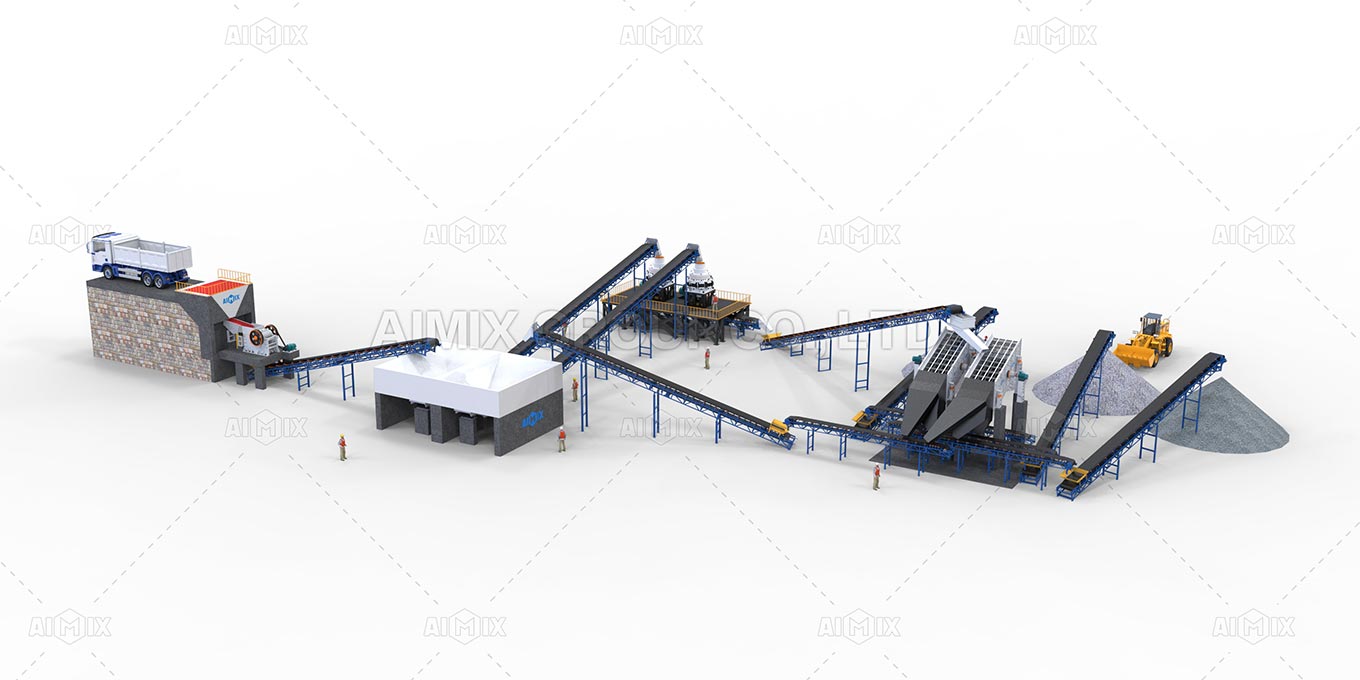Why Stone Crusher Plant Prices Differ: A Deep Dive into Capacity and Design
This is a paragraph! Here's how you make a link: .
Stone crusher plants come in a variety of sizes and configurations, and their prices can vary significantly based on several factors. While many buyers focus primarily on upfront costs, it is essential to consider factors such as plant capacity and design. These elements directly influence both the cost of acquisition and the plant's long-term operational efficiency. Understanding how these variables affect pricing can provide valuable insights for those looking to make an informed purchase decision.
Factors Affecting Stone Crusher Plant Prices
The price of a stone crusher plant is influenced by several key factors, primarily the plant's capacity and its efficiency in processing materials. Buyers must consider the scale of operations and the types of materials to be processed before determining their budget.
Material Capacity and Processing Volume
The capacity of a stone crusher plant, often measured in tons per hour (TPH), is one of the most significant contributors to stone crusher plant price differences. Plants designed to process larger volumes of material are equipped with more powerful crushers and often include additional equipment like feeders, conveyors, and screens. These enhancements increase the overall cost but are necessary for high-capacity operations. For example, a plant capable of producing 500 TPH will naturally command a higher price than one designed for 100 TPH due to the more robust components and added complexity.

Another factor related to capacity is the type of material being processed. Harder materials such as granite and basalt require more powerful crushers that are designed to handle higher levels of stress. Conversely, softer materials like limestone or sand might not necessitate as advanced equipment, thus lowering the cost of the plant.
Power Consumption and Operational Efficiency
Power consumption is another critical factor that impacts the stone crusher plant price. Plants that are designed to handle larger capacities or process tougher materials typically require more energy. A plant’s energy efficiency, or lack thereof, can substantially affect both its initial price and its ongoing operational costs.
Energy-efficient plants are often equipped with advanced motor and drive technologies, which contribute to their higher initial cost but result in long-term savings on electricity bills. Additionally, energy-efficient models tend to generate less heat and require less maintenance over time, reducing overall downtime and increasing productivity.
The Role of Design in Cost Variations
The design of a stone crusher plant plays a pivotal role in its overall cost. Customization, material quality, and durability are all aspects of design that directly impact the plant's price.
Customization and Specific Needs
One of the primary reasons why stone crusher plant prices can vary is the degree of customization required for specific projects. Some projects necessitate specialized equipment, such as crushers designed for handling highly abrasive materials, while others may need a plant configuration that allows for easier mobility and transportation. These customizations often involve engineering changes, which can increase both the cost of manufacturing and the final price tag of the plant.
Additionally, some buyers may require plants that can be adapted for specific environmental conditions, such as extreme temperatures or humidity levels. This adds another layer of complexity to the design and, consequently, the cost. While customization ensures that the plant meets specific needs, it can be a costly endeavor that significantly alters the pricing structure.
Quality of Components and Durability
The quality of the components used in a stone crusher plant also contributes to the price difference. High-quality components, such as wear-resistant steel, reinforced frames, and premium crushers, tend to raise the cost of the plant. While these materials increase the upfront price, they provide greater durability and longer service life, reducing the need for frequent repairs or replacements.
Moreover, plants designed with durability in mind often have advanced safety features, such as overload protection systems and automatic shutdowns. These added safety measures can make the plant more expensive initially but ensure that it operates more reliably over the long term.

Balancing Price and Performance: What Buyers Should Consider
When purchasing a stone crusher plant, it is essential to strike the right balance between price and performance. The upfront cost is an important consideration, but long-term operational costs, maintenance requirements, and the overall efficiency of the plant should also be factored into the decision-making process.
Understanding Cost-Effective Options
For buyers who are focused on finding a cost-effective solution, it is crucial to evaluate whether the crushing plant’s capacity and design meet the operational requirements without over-investing in features that may not be necessary for the intended project. For instance, purchasing a high-capacity plant when a smaller, more efficient plant would suffice can result in wasted resources both financially and operationally.
Choosing a plant with the right specifications for the project will help optimize both performance and cost efficiency, ensuring that the plant can handle the required workload without incurring unnecessary expenses.
Long-Term Investment and Maintenance Considerations
Lastly, it is important to view the purchase of a stone crusher plant as a long-term investment. The initial purchase price should not be the sole determining factor. A cheaper, less durable plant may save money upfront, but it could lead to higher maintenance costs, unplanned downtime, and frequent part replacements.
Investing in higher-quality components, energy-efficient models, and more durable designs can ultimately lead to lower operating costs, fewer repairs, and more consistent performance over time. Therefore, the total cost of ownership—including maintenance, energy consumption, and lifespan—should be factored into the purchasing decision.
Conclusion
The price of stone crusher plants is influenced by a combination of factors, including the material capacity, design complexity, and overall durability of the plant. By considering the specific needs of the project, understanding the relationship between capacity and price, and evaluating the long-term costs, buyers can make more informed decisions that ensure they are getting the best value for their investment. Whether prioritizing cost-efficiency or long-term durability, finding the right balance is key to maximizing performance and minimizing unnecessary expenditures.

